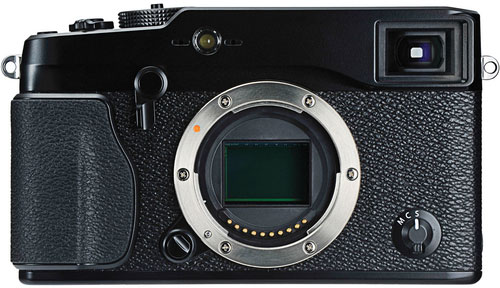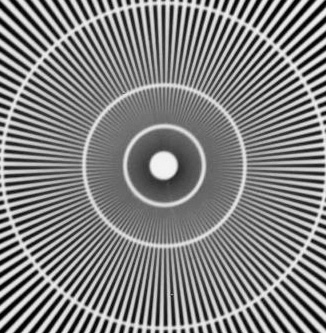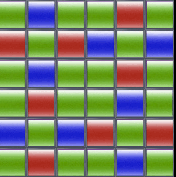Fuji X-Pro1 Sensor Design — No Anti-Aliasing Filter for Sharp Images
B&H Photo has the 16-megapixel Fujfifilm X-Pro1 and the Fuji 18mm f/2, 35mm f/1.4 and 60mm f/2.4 lenses available for pre-order.
The new Fujifilm X-Pro1 has an intriguing 16.2-megapixel APS-C “X-Trans CMOS” sensor design without an anti-aliasing (blur) filter. Note that the Leica M9 is 18 megapixels, so the linear resolution difference is minimal.
An anti-aliasing (AA) filter is used to reduce moiré, but has the nasty side effect of blurring the image, as that is what it is— a blur filter. Read about what happens when an anti-aliasing filter is removed.
Moiré can be a serious problem with some subjects, see Making Sharp Images for an extreme example of moiré with the Leica S2, and how to mitigate it. Mediocre lenses generally do not have moiré issues, and the better the lens the more likely that it will produce moiré (higher resolving power and contrast are key factors).
Example with/without AA filter
Shown below is are two images from a Nikon D700, modified by maxmax.com. At left is a standard D700 crop. At right is the same camera without the AA filter. The difference is very significant. Mouse over the image at left to quickly compare.
Fuji’s approach
Fuji approaches the moiré issue by designing a sensor with a random distribution of color photosites. How well this random arrangement will play in RAW converters like Adobe Camera RAW remains to be seen!
Moiré is tackled at its root cause by the revolutionary X-Trans CMOS sensor's color filter array. By enhancing a periodicity (randomness) in the array arrangement, the color filter minimizes generation of both moiré and false colors, eliminating the necessity for an optical low-pass filter in the lens and enabling X-Trans CMOS sensor to capture full “unfiltered” lens performance.
I am not particularly concerned with moiré, having had few to no issues with the Leica M9, which also has no anti-aliasing filter. In this sense, Fuji’s emphassis on the moiré aspect is overblown as a real issue. However, I’ve had one reader tell me that moiré on his Leica M9 has been a very serious issue for artificial subjects like buildings. At any rate, having the benefits of no AA filter and also having no moiré is a nice step forward.































